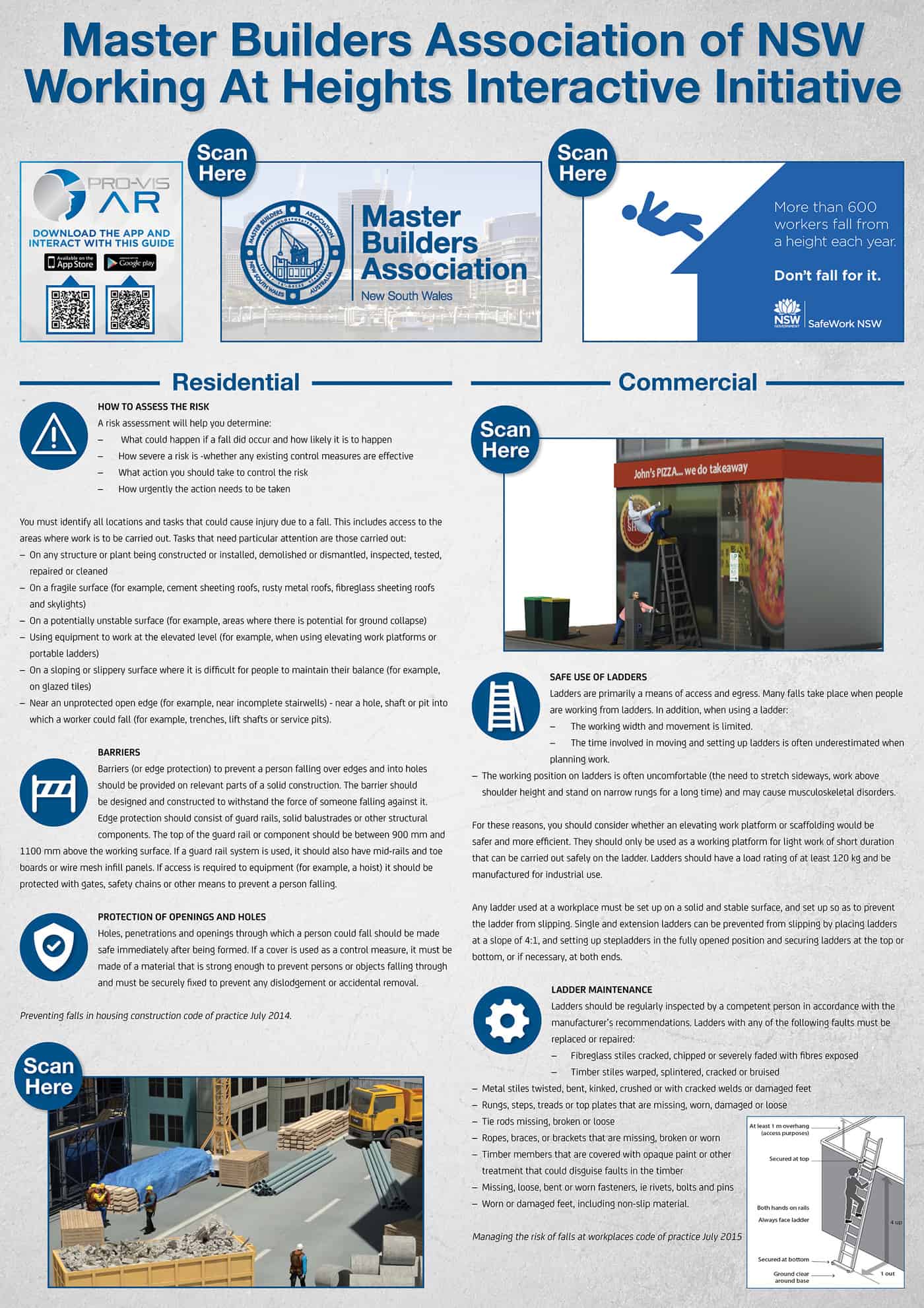 On February 2016, the New South Wales division of the Master Builders of Australia (MBANSW) launched a new mobile app that applies augmented reality (AR) to access safety information related to construction sites. The software has the capacity to access safety information in the form of videos, text, documents and internet links that can put occupational health and safety (OHS) information into the hands of workers.
On February 2016, the New South Wales division of the Master Builders of Australia (MBANSW) launched a new mobile app that applies augmented reality (AR) to access safety information related to construction sites. The software has the capacity to access safety information in the form of videos, text, documents and internet links that can put occupational health and safety (OHS) information into the hands of workers.
There is great potential in this software application and the MBANSW should be acknowledged for supporting a technology that is still in its early development but offers an additional way of accessing important occupational health and safety information at the place where may be most needed – in the hands of workers.
But the app is not the answer to everything and, thankfully, MBANSW never claimed it was. There are technical and organisational limitations to the app but it is a very good start.
Continue reading “Master Builders keeping up with tech changes in safety”


 The
The